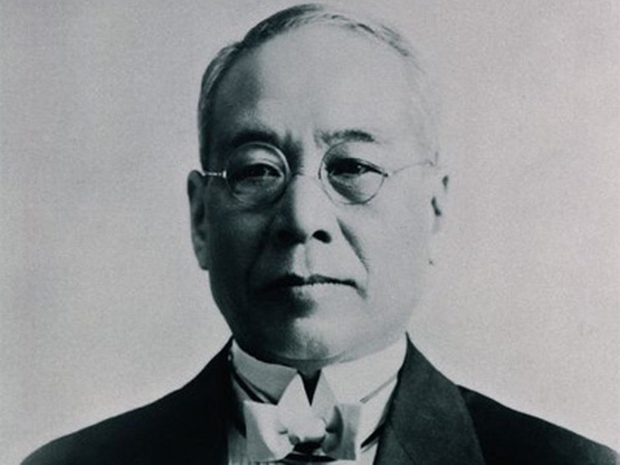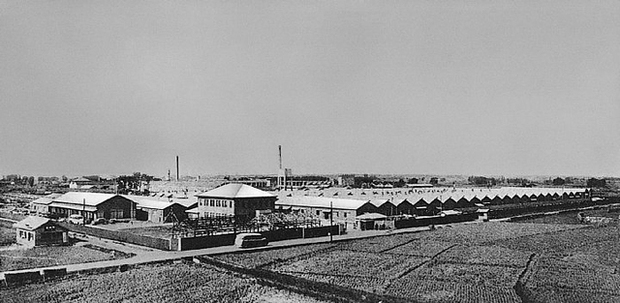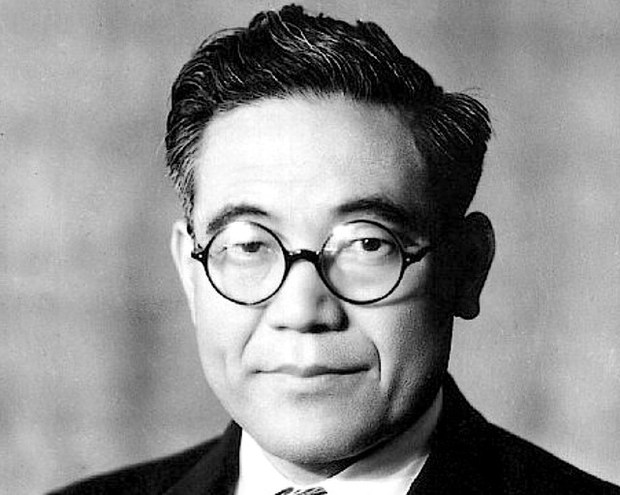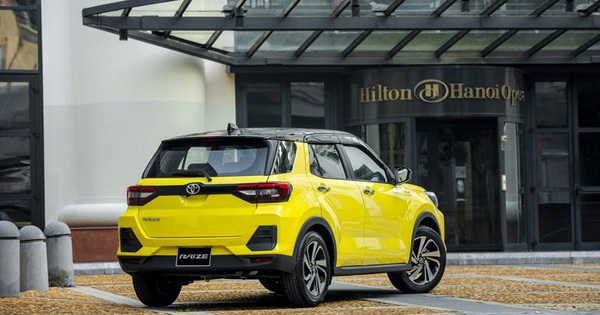Sell the patent of the textile machine to have money to build and manufacture cars, and then become the ‘tycoon’ of the Japanese car industry
It is often said that the Japanese industry has two things to be proud of, the first is the electronics industry, the second is the automobile industry. If Panasonic is the largest electronics manufacturer in Japan, Toyota is the “boss” of the famous cherry blossom car empire.
Founded in 1937, Toyota has opened an era with great success in the automotive industry, contributing to the honor of Japan in the international arena. But few people know that the origin of this powerful car empire comes from a small textile company of a talented carpenters family.
01.
THE DREAM OF THE YOUNG MAN THI MOC
Toyota founder, Sakichi Toyoda, was born into a poor family in Yamaguchi Prefecture, with a carpenter father and a homemaker mother. After graduating from elementary school, because of difficult family circumstances, Sakichi quit school to follow his father to learn carpentry. As he inherited the passion and skillful hands from his father, he soon showed his talent and became a young carpenter specializing in building wooden looms from time to time.

Portrait of Toyota founder Sakichi Toyoda. (Photo: internet)
Not only building conventional looms, Sakichi also burned with determination to improve and invent efficient looms, helping to free up labor so that his mother would be less hard-working. Since then, he has been helping his father with carpentry less and spending most of his time researching the idea of making a loom for his mother.
Finally, after a period of research and research, one day in 1890, his newly invented loom was officially born.
Although it is only made of wood and has a rather rudimentary design, this new version of the machine has helped the weavers to run back and forth, but the speed of weaving has increased by 40-50%. After 1 year, Sakichi quickly registered a patent for his loom and officially became the boss specializing in manufacturing and distributing looms. Through many improvements, Sakichi’s machines were so successful that they could not meet the needs of the sewing factories at that time.
02.
TIME CREATES A MIRACLE
In 1923, a large earthquake occurred in Kanto – the largest economic and political center of Japan, making the perception of Japanese cars somewhat changed. When the railway system was severely damaged, cars suddenly became more important than ever.
During reconstruction after the historic earthquake, the Tokyo government ordered 800 trucks from the American company Ford. Moreover, at that time, American automakers almost monopolized the Japanese market, causing Sakichi Toyoda’s national pride to rise again and began to cherish the idea of car production.

Toyota’s first car assembly plant from the outside (Photo: internet)
In 1929, Sakichi sent his son Kiichiro Toyoda to England and sold his patent for a loom to Platt Brothers for £100,000. With this money, he handed over to his son to invest in the construction and production of cars. By 1930, the Toyoda family in turn perfected the body, chassis and engine production lines.
In 1934, the first model car was born and was put into mass production in 1935. In 1936, his son officially took over the company and officially replaced the “d” with the “t” in the name. called Toyota with the expectation of bringing luck and symbolizing constant growth.

Portrait of Kiichiro Toyoda (Photo: internet)
In April 1937, Toyota was officially registered for commercial copyright and became a symbol of the cherry blossom auto industry when popular car models began to be born and became popular. The 1940s witnessed the miraculous growth and expansion of Toyota as vehicle production steadily increased over the years.
By 1947, Toyota had produced 100,000 units. At the same time, Toyota set up many more satellite businesses in its supply chain to ensure independence in production, not depending on any party.
03.
GRACE TO THE WORLD
After World War II, Japan became a ruin, Toyota’s financial situation also deteriorated. At this time, Toyota had a serious conflict between employees and management. President Kiichiro Toyoda and associates resigned, two new leaders of Toyota, Eiji Toyoda and Shoichi Saito, came to the US and sought to revive the once powerful auto empire. They tour Ford factories and observe the most advanced car technology in search of new ideas for the company. Thanks to that, the Toyota Suggestion System was born, where every employee is encouraged to give suggestions for improvement in every area.
At this point, the most important policy activated is the commitment to invest in the most modern facilities, as the key to progress in capacity and quality. Toyota accelerated rapidly in the 1950s, investing in new equipment for all of its factories.
In 1955, Toyota began to mark its international expansion by exporting two models of Land Cruiser and Toyopet to the US market. However, the company’s expansion into foreign markets really began in 1957, when Toyota became the first Japanese automaker to enter the US market with the Toyota Crown brand.
In the 1960s, Toyota’s car company successfully conquered the Australian and European markets, respectively. By 1970, Toyota’s car export sales officially reached 1 million vehicles. Also from that time, they put their names on the map of major car manufacturers in the world.

Mr. Eiji Toyoda at a joint venture factory with Genera Motors in 1985. (Photo: AP)
It can be said that in this period, Toyota developed rapidly. In the late 1950s, Toyota was just a very small company in the world, but by 1963, it was the 93rd car company in the world and in 1966 it rose to 47th place.
In 2005, with a revenue of nearly 180 billion USD, Toyota was the only corporation of Japan and also the only one in Asia in the Top 10 of the largest-scale firms with a huge profit of up to 11 million USD. billion USD.
In 2009, Akio Toyoda – grandson of Kiichiro Toyoda officially took office, bringing the Toyota empire back to the nepotism era. Currently, Toyota owns many famous and popular car brands around the world such as Lexus, Scion. In 2014, Toyota’s sales reached about $213.78 billion, up 16.1%, of which the automotive segment accounted for 92.56%.
Over 70 years of establishment and development, Toyota has seized the development opportunities to transform constantly, thereby achieving outstanding achievements in the international arena. Indeed, an enterprise that knows how to adapt to the times, recognizing the ups and downs of the times will create its own opportunities for success. This is what young or mature businesses need to learn if they want to break through in the marketplace.
Source: Synthesis
at Blogtuan.info – Source: autopro.com.vn – Read the original article here



